Last year, a number of automakers announced or advanced ambitious plans to electrify heavy-duty big rigs, semi-trucks, box trucks, delivery vans and more. That article was one of GreenBiz's most popular stories throughout the year. And the demand and interest in this technology is only growing stronger. Given that trucks consume the vast majority of energy compared to other modes of freight transportation, electrification in this area has huge potential to decrease the carbon impact of fleets.
These new vehicles are quickly bumping up against familiar challenges of battery range, production capacity and charging, or fueling, infrastructure. That's one reason a group of fleet leaders who spoke at the GreenBiz VERGE 20 conference late last year said they’re integrating renewable natural gas and other efficiency improvements alongside a long-term push to electrify.
The transition is also proving to require a team effort that goes far beyond the vehicle manufacturers — and involving governments, utilities and a new ecosystem of technicians to go along with it.
Nonetheless, the transition accelerated in 2020 as more mammoth automakers pushed electric trucking fleets closer to reality. Here’s a look at what nine big-name players accomplished over the past 12 months, and what to keep an eye on in 2021.
Arrival
Arrival, a five-year-old London-based startup, is establishing a presence in the U.S. and attracting major investments for its electric buses and vans still in development.
The company closed out 2020 by investing $3 million and hiring 150 employees for its North American headquarters in Charlotte, North Carolina. But the bigger news for Arrival came earlier in the year, when UPS announced an order of 10,000 purpose-built electric vans, to be delivered through 2024. The deal is worth hundreds of millions of dollars each year to Arrival.
The upstart is hoping to distinguish itself in the electric vehicle market in two major ways. First, and perhaps most crucially, it plans to price its vehicles at the same or lower prices as comparable fossil-fuel vehicles. This will be achieved partially by using a patented, composite material the company has developed.
Second, Arrival is building its vehicles in a network of "microfactories," the first of which is in South Carolina. The smaller factories use a new type of assembly process and could allow the company to more easily customize vehicles for different customers. Each microfactory will be able to produce 10,000 vans or 1,000 buses per year, Arrival President Avinash Rugoobur told the Observer.
Arrival still has yet to specify the range specifications for its vans, but it’s expected to be at least 100 miles. The composite material promises to make the vans lightweight and resistant to damage, another potential edge for Arrival over other van designs emerging in the market. The vans are expected to start rolling out for delivery in 2022.

BYD
BYD is well-known for its electric buses, which continue to sell to fleets around the country. But the company’s trucking division is ramping up production of medium- and heavy-duty electric trucks, too.
BYD is the world’s largest manufacturer of electric vehicles, and its models include a Class 8 Day Cab, a Class 6 truck, a terminal tractor and two models of all-electric refuse trucks.
BYD delivered its 100th battery-electric truck in the U.S in early 2020, a Class 8 model for Anheuser-Busch’s distribution operations in Oakland, California. It’s a relationship that’s likely to continue as Anheuser-Busch has committed to reducing carbon emissions by 25 percent across its entire value chain by 2025.
BYD’s Class 8 has a range of 125 miles and a top speed of 65 miles per hour. It can recharge in as little as two hours with a high-speed direct current system or in about 14 hours with a standard 240-volt charging system.
Global shipping provider DHL also began piloting BYD’s Class 8 trucks in November, adding four vehicles to its fleet in Los Angeles. That easily could grow as DHL works to meet a goal of net-zero logistics-related emissions by 2050.
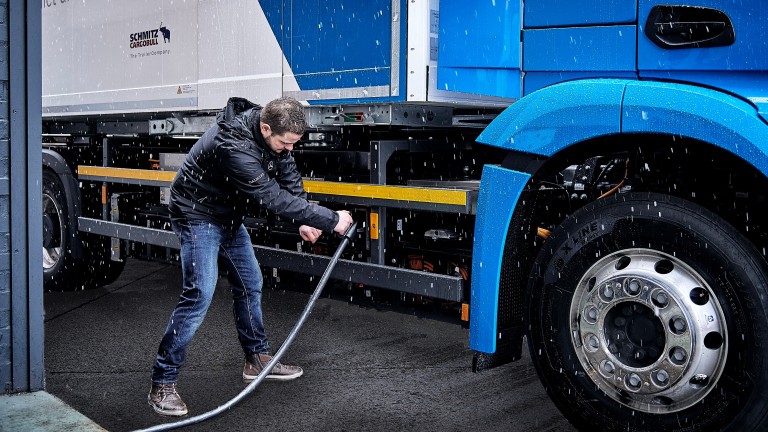
Daimler Trucks
Daimler, the largest truck maker in the world, is seeing significant progress on its Freightliner eCascadia, an electric big rig that promises a 250-mile range.
The German automaker recently delivered a Freightliner eCascadia to Southern California Edison (SCE) for a three-month trial of the battery-electric Class 8 truck. The power utility company will use the eCascadia to transport heavy equipment from its warehouse to service centers. It fits in with SCE’s goal to electrify 30 percent of its medium-duty vehicles and pickup trucks and 8 percent of its heavy-duty trucks by 2030.
Daimler’s Mercedes-Benz brand also unveiled a new electric model this year, the Mercedes-Benz eActros LongHaul. It builds on the company’s existing short-range eActros truck that is already being tested by customers. The eActros LongHaul promises a 310-mile range, and Daimler predicts it will be ready for production by 2024.
Alongside the eActros LongHaul, Daimler also announced an electric-fuel cell truck called the Mercedes-Benz GenH2, which it says could drive more than 600 miles before refueling is needed. Daimler expects to start piloting the truck in 2023 and making it commercially available by 2025.
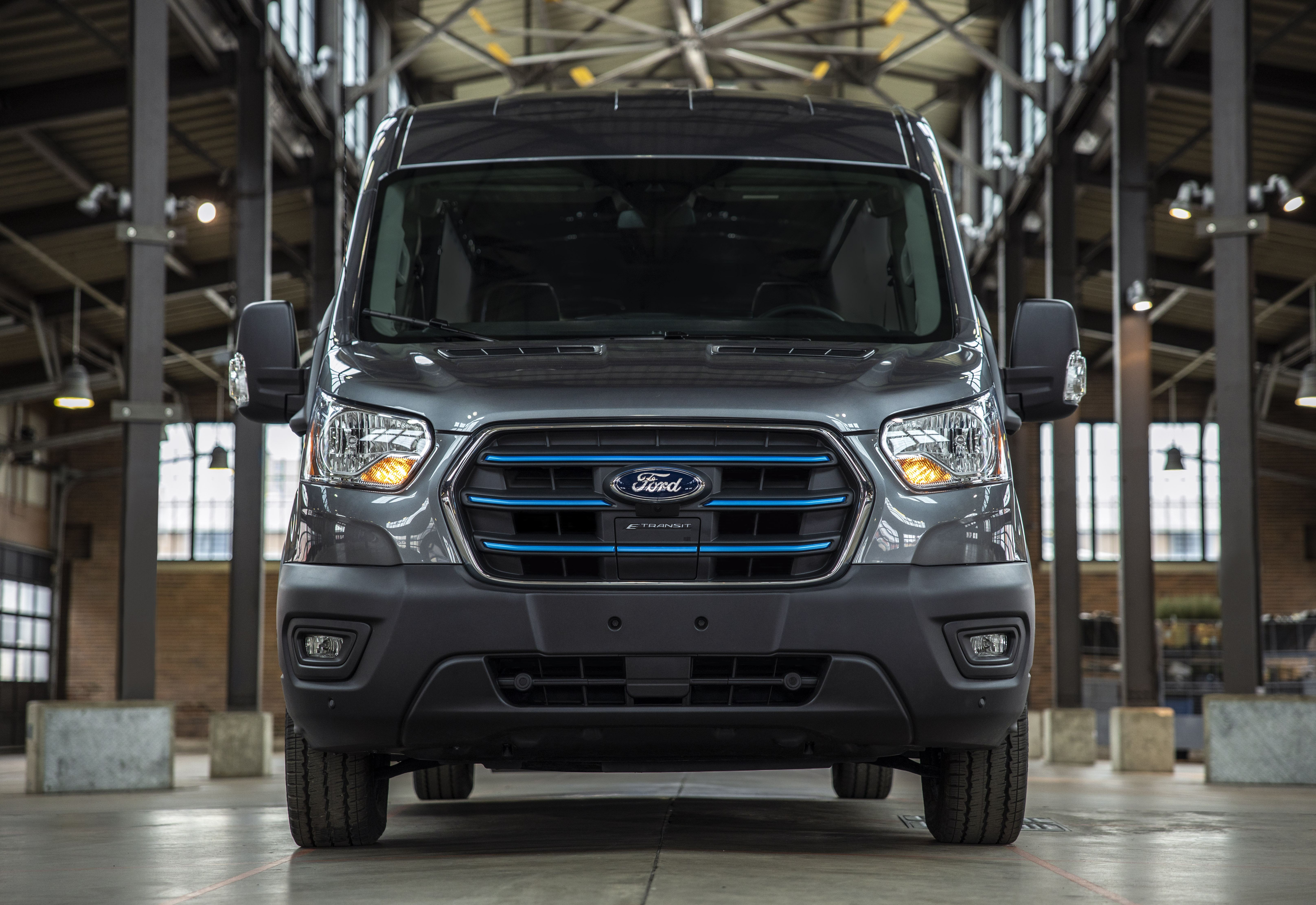
Ford
American auto giant Ford jumped into a new sector of the electric vehicle market in 2020 with plans to develop an all-electric version of its popular Transit cargo van.
Ford is promising that the E-Transit van will be available starting in late 2021. The vehicle is expected to cost "less than $45,000" and will have a range of 126 miles.
Ford sells 150,000 of its traditional E-Transit vans each year. Research from the company’s internal data says the average Transit user drives 74 miles per day, well within the projected range of the electric version of the vehicle.
Ford’s ambitious production timeline is backed by a $100 million investment to retrofit a Kansas City plant that is already making the diesel-powered Transit. Ford says production of the E-Transit also will create 150 jobs.
Across the company, Ford’s investment in electrifying vehicles through 2022 totals $11.5 billion. New models include the Mustang Mach-E and an electric version of its Ford F-150, America's most popular pickup truck.
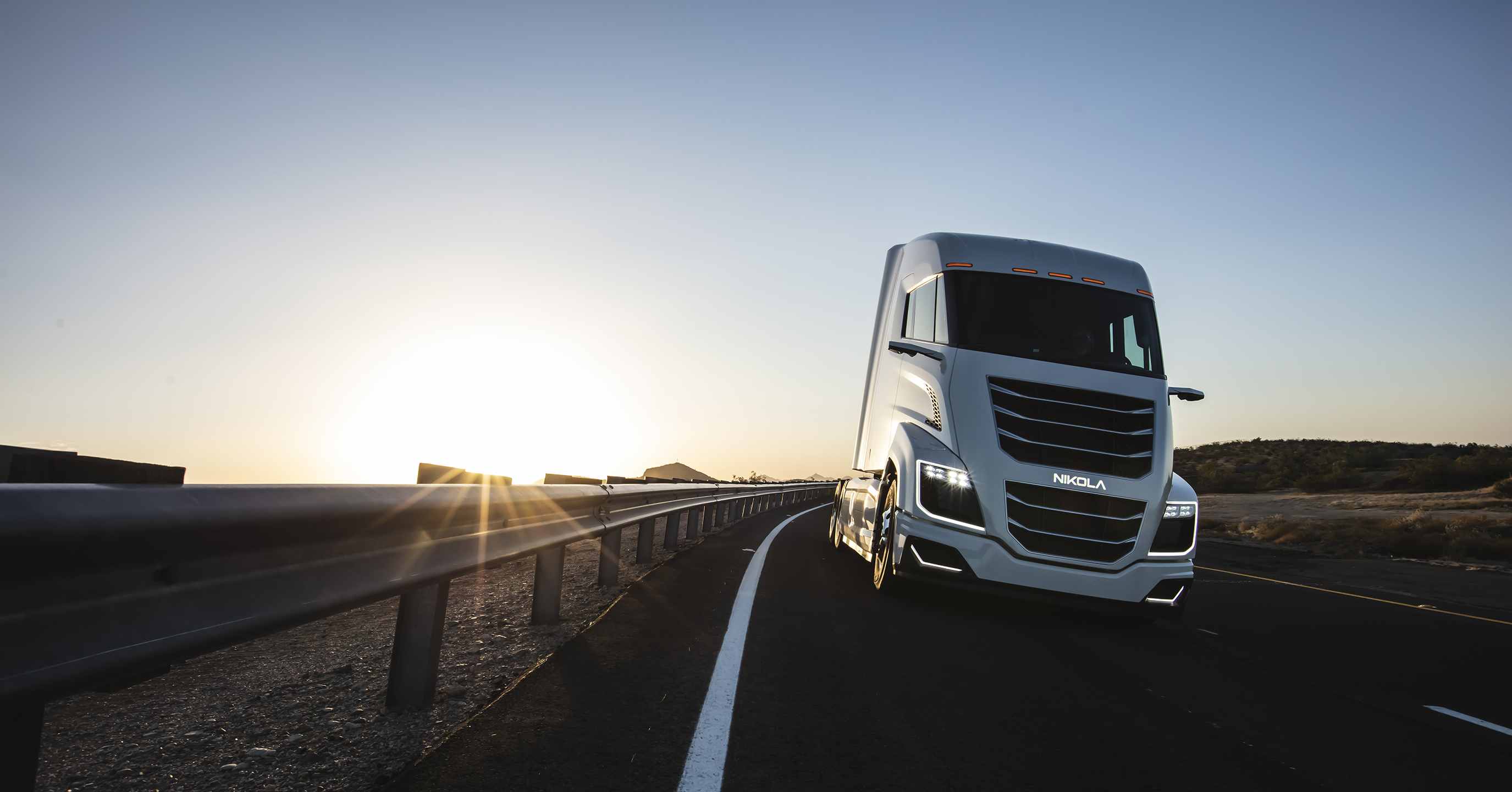
Nikola Motors
Phoenix-based startup Nikola Motors made a big step toward rolling out its electric semi-trucks this year. The company announced over the summer plans for a $600 million factory in Arizona, where it wants to begin making fully electric trucks in 2021 and hydrogen fuel-cell models by 2023.
The plans came shortly after the company went public in June, marking a year of significant growth for the lesser-known auto company named after Nikola Tesla, the Serbian-American inventor who created electric motors.
The company’s models include two semi-trucks available with either fully electric or hydrogen fuel-cell electric capabilities, and anticipated ranges between 500 and 700 miles. The Nikola Two is intended for North America, and the Nikola Tre is available in Europe, Asia and Australia.
Creating the infrastructure to refuel tens of thousands of hydrogen-powered big rigs that Nikola plans to put on the road will require a huge investment. The company plans to build a nationwide network of 700 hydrogen stations in the U.S. by 2028, potentially with help from BP. (To put that into perspective, there are about 400 hydrogen fueling stations worldwide.) The company plans to power each refueling station with renewable sources such as wind and solar. It will take between 10 and 15 minutes to refill one of its semi-trucks.

Rivian
Rivian spent much of 2020 racing to fill what is by any measure a huge order: 100,000 all-electric delivery vans designed for e-commerce giant Amazon.
The company is building out a factory line for the vans in its Normal, Illinois, facility. A prototype is already being tested, and Rivian expects to deliver the first vans to Amazon during the second half of 2021, according to a company spokesperson.
Rivian’s agreement with Amazon promises 10,000 vans by the end of 2022 and 100,000 by 2030. The vans will be built in three sizes and are part of Amazon’s strategy to reach net-zero carbon emissions by 2040.
Ross Rachey, director of global fleet and product logistics for Amazon, spoke with GreenBiz Senior Writer Katie Fehrenbacher during a session at VERGE 20. He said that in addition to the tall order Amazon gave to Rivian, another steep challenge will be the infrastructure needed to support the fleet.
"The reality is that charging infrastructure, electricity and utility connections — it's the longest lead, probably the most challenging part of this equation," Rachey told GreenBiz.

Tesla
Tesla has been teasing its entrance into the heavy-duty transportation sector for years, ever since it unveiled plans for the Tesla Semi in 2017. But production timelines have been pushed back over and over again, with the company now projecting a 2021 start date.
Tesla nonetheless continues to receive large orders for the long-promised Tesla Semi electric Class-8 truck, including Walmart’s 130-truck reservation in September. Other big-name companies such as Anheuser-Busch, FedEx, PepsiCo and UPS also have expressed interest but have yet to put down the $20,000-per-truck reservation fees.
The Tesla Semis will come in two models: one with a 300-mile range and one with a 500-mile range. According to the company, the expected base prices for those trucks are $150,000 and $180,000, respectively. (A typical Class 8 diesel day-cab starts at roughly $120,000.)
Tesla says the Semi will accelerate from 0 mph to 60 mph in 20 seconds while carrying a full load (roughly 40 tons); it will be able to maintain that speed while traveling up a 5 percent grade, according to the company.
As the delays in Tesla Semi production have piled up, some analysts believe the big rig has become a "distraction" and fundamentally different business from Tesla’s electric passenger vehicles.
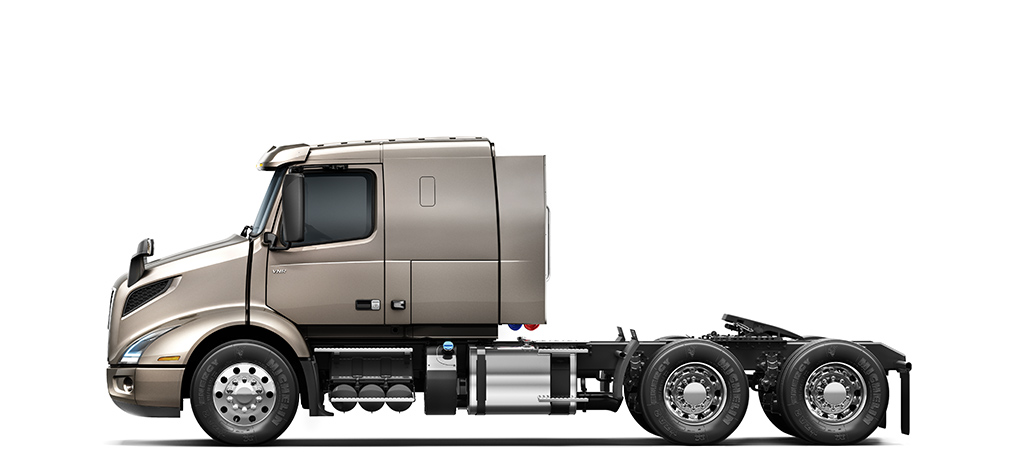
Volvo
Volvo Trucks brought its zero-emission truck, the VNR Electric, to market just as 2020 came to a close.
The VNR Electric has a 150-mile range, with speeds up to 65 mph on the highway. An 80 percent charge for the vehicle takes 70 minutes, Volvo says. The truck comes in three models: A straight truck; a 4x2 tractor; and a 6x2 tractor.
Volvo invested $400 million into its New River Valley, Virginia, factory to assemble the trucks, which first rolled out in Southern California in 2019. VNR Electric comes out of Volvo's broader Low-Impact Green Heavy Transport Solutions (LIGHTS), itself part of California Climate Investments. The statewide program puts billions of cap-and-trade dollars to work reducing greenhouse gas emissions, according to a Volvo company statement.
Volvo has said it will offer the trucks for lease or sale, and also will lease and finance charging infrastructure to go along with them.
Volvo Trucks is also in the early stages of introducing a hydrogen fuel-cell truck in a partnership with Daimler. Volvo Trucks CEO Martin Lundstedt said the COVID-19 crisis was a motivating factor for the company to increase its focus in this area, according to Forbes.
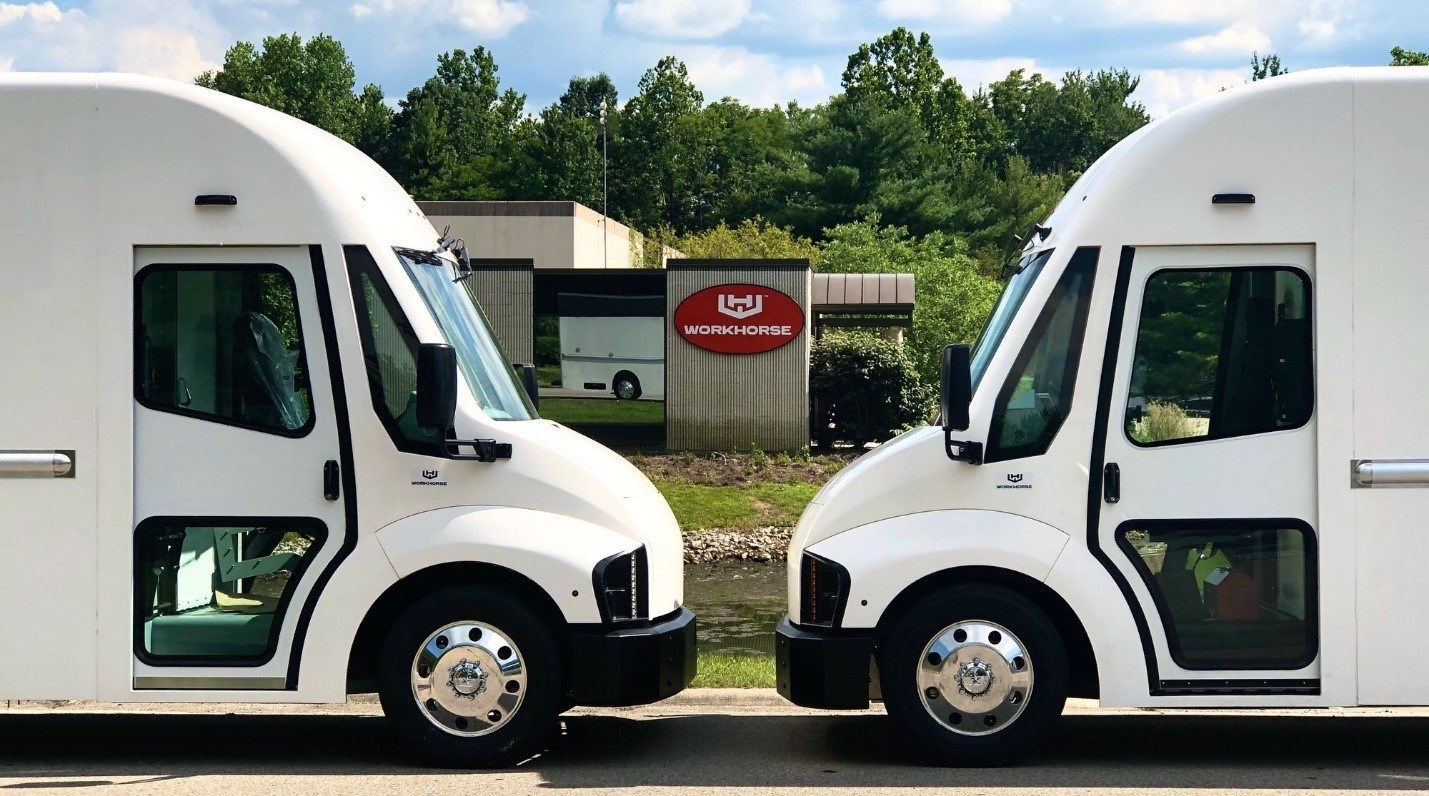
Workhorse
An electric truck startup out of Cincinnati, Workhorse is making progress on its C-Series all-electric delivery van, with big orders arriving in 2020.
The company received a purchase order for 500 of its all-electric C-1000 delivery vehicles from Pritchard Companies in November. Pritchard is one of the nation's largest commercial vehicle distributors, selling over 30,000 vehicles each year.
Workhorse also made headlines in July when it announced that Ryder System would offer the C-Series vans through its leasing and rental programs.
The C-1000 Workhorse electric van includes 1,000 cubic feet of cargo space, with about 100 miles of range. The vehicle can reach top speeds of 75 mph.
As Workhorse heads into 2021 with a big stack of orders, it remains to be seen whether it can deliver on production. Automotive World reported in November that the company’s factory was struggling with short staffing amid a resurgent COVID-19 outbreak in Ohio.
Workhorse’s fate also depends on whether it lands a piece of a $6.3 billion United States Postal Service contract to produce 186,000 mail trucks in the coming years. Workhorse’s stock fell 21 percent on the USPS announcement that it would not choose a contractor as originally planned near the end of 2020. A decision is expected in the second quarter of 2021.
Four teams are competing for the USPS contract: India’s Mahindra Automotive North America; Turkey’s Karsan/Michigan’s Morgan Olson; American companies Oshkosh/Ford; and Workhorse.
"electric" - Google News
January 04, 2021 at 05:34PM
https://ift.tt/355nIDk
Keep your eyes on these 9 electric truck and van companies in 2021 - GreenBiz
"electric" - Google News
https://ift.tt/2yk35WT
https://ift.tt/3bbj3jq
No comments:
Post a Comment